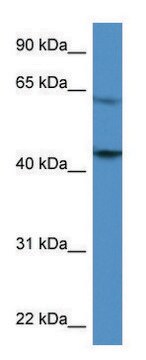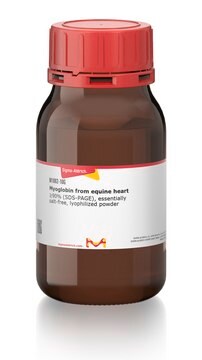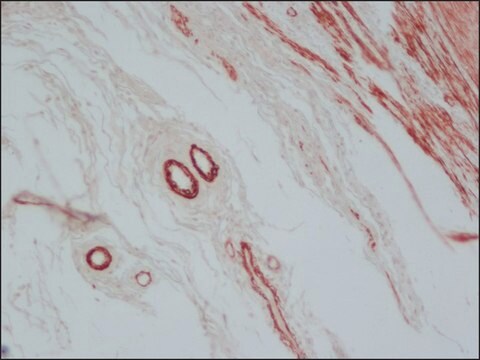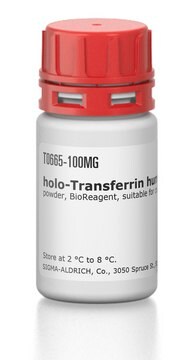SAB4500823
Anti-PAR1 (Cleaved-Ser42), N-Terminal antibody produced in rabbit
affinity isolated antibody
Sinonimo/i:
CXCR-7, CXCR7, G-protein coupled receptor 159, G-protein coupled receptor RDC1, chemokine orphan receptor 1
About This Item
Prodotti consigliati
Origine biologica
rabbit
Livello qualitativo
Coniugato
unconjugated
Forma dell’anticorpo
affinity isolated antibody
Tipo di anticorpo
primary antibodies
Clone
polyclonal
Stato
buffered aqueous solution
PM
antigen 46 kDa
Reattività contro le specie
human
Concentrazione
~1 mg/mL
tecniche
ELISA: 1:20000
western blot: 1:500-1:1000
N° accesso NCBI
N° accesso UniProt
Condizioni di spedizione
wet ice
Temperatura di conservazione
−20°C
modifica post-traduzionali bersaglio
proteolytically cleaved (Ser42)
Informazioni sul gene
human ... F2R(2149)
Descrizione generale
Protease-activated receptor-1 (PAR1), also known as coagulation factor II thrombin receptor (F2R), is encoded by the gene mapped to human chromosome 5q13.3. The encoded protein is a cell surface seven-transmembrane G protein coupled receptor.
Immunogeno
Immunogen Range: 23-72
Applicazioni
Azioni biochim/fisiol
Caratteristiche e vantaggi
Stato fisico
Esclusione di responsabilità
Non trovi il prodotto giusto?
Prova il nostro Motore di ricerca dei prodotti.
Codice della classe di stoccaggio
10 - Combustible liquids
Classe di pericolosità dell'acqua (WGK)
nwg
Punto d’infiammabilità (°F)
Not applicable
Punto d’infiammabilità (°C)
Not applicable
Scegli una delle versioni più recenti:
Certificati d'analisi (COA)
Non trovi la versione di tuo interesse?
Se hai bisogno di una versione specifica, puoi cercare il certificato tramite il numero di lotto.
Possiedi già questo prodotto?
I documenti relativi ai prodotti acquistati recentemente sono disponibili nell’Archivio dei documenti.
Il team dei nostri ricercatori vanta grande esperienza in tutte le aree della ricerca quali Life Science, scienza dei materiali, sintesi chimica, cromatografia, discipline analitiche, ecc..
Contatta l'Assistenza Tecnica.







